Suppresses 16 types of pollen that are scattered all year round in Japan
It was confirmed that the streamer technology suppresses 16 kinds of pollen. (cedar, cypress, rice, pampas grass, rye grass, timothy grass, anthoxanthum odoratum, orchardgrass, red pine, black pine, mugwort, goldenrod,ragweed, Japanese hop, white birch, ginkgo)

Graduate School of Agriculture and Life Science,
the University of Tokyo
In fact, pollen is scattered all over Japan all year long.
Spring may have the image of a pollen season, but this is influenced by the fact that cedar pollen, which has the highest number of people with symptoms, begins to fly in early spring. However, in reality, a variety of plants scatter pollen all over Japan throughout the year, so it is important to provide care throughout the year. First of all, let's understand the type of pollen and the season when it scatters, and use it for prevention.
Depending on the weather and the area, pollen peaks occur twice a day. First, the first peak is from the morning to early afternoon. This is because the pollen scattered from the mountains in the early morning flows into the urban areas. And the second peak is in the evening. This is because the convection of air occurs when the temperature drops, pollens in the sky come down, and the pollen that has fallen on the ground rises up. These times are when many people move, so be sure to take proper measures against pollen, such as wearing a mask.
 Scatter in
Scatter in
Honshu-Kyushu
from February to
March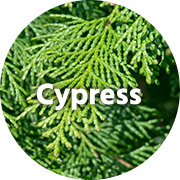 Scatter in
Scatter in
Honshu-Kyushu
from March to
April Scatter in
Scatter in
Hokkaido-Okinawa
from June to
September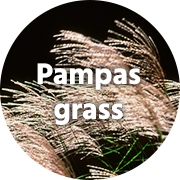 Scatter in
Scatter in
Hokkaido-Okinawa
from July to
October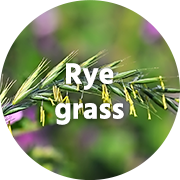 Scatter in
Scatter in
Hokkaido-Okinawa
from June to
August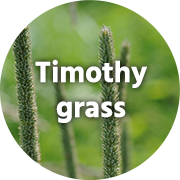 Scatter in
Scatter in
Hokkaido-Okinawa
from June to
August Scatter in
Scatter in
Hokkaido-Kyushu
from May to
July Scatter in
Scatter in
Honshu-Kyushu
from July to
August Scatter in
Scatter in
Hokkaido-Kyushu
from April to
May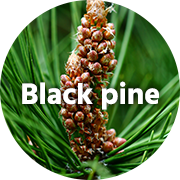 Scatter in
Scatter in
Honshu-Okinawa
from April to
May Scatter in
Scatter in
Honshu-Kyushu
from September to
October Scatter in
Scatter in
Hokkaido-Okinawa
from July to
November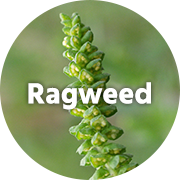 Scatter in
Scatter in
Hokkaido-Okinawa
from July to
October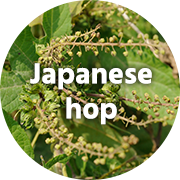 Scatter in
Scatter in
Hokkaido-Kyushu
from September to
October Scatter in
Scatter in
Hokkaido-Honshu
from March to
May Scatter in
Scatter in
Hokkaido-Okinawa
from April to
May
Demonstration of the suppression effect against cedar pollen
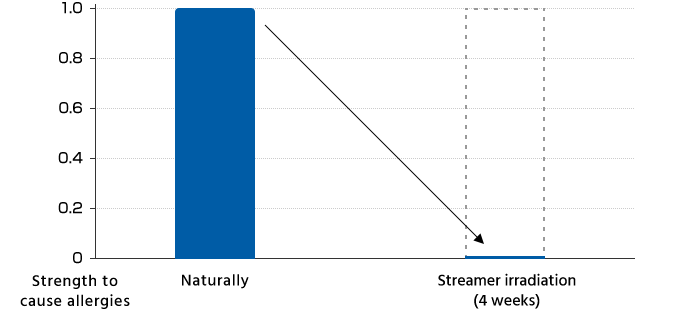
As a result of the experiment, it was confirmed that 98.9% of cedar pollen was suppressed in 4 weeks after the Streamer irradiation.
Testing organization
Demonstrated at L.S.L. Asaka Research Laboratory under the supervision of Project Professor Kusakabe, graduate school of the University of Tokyo
Test method
Using an actual air purifier, the loss of antigenicity of the pollen placed on the filter was confirmed by ELISA method.
Demonstration of the suppression effect against cypress pollen
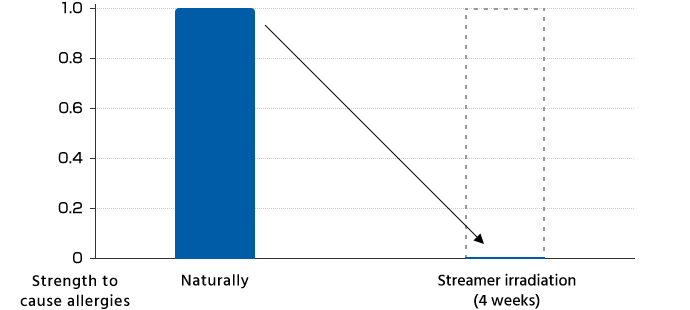
As a result of the experiment, it was confirmed that 99.9% of cypress pollen was suppressed in 4 weeks after the Streamer irradiation.
Testing organization
Demonstrated at L.S.L. Asaka Research Laboratory under the supervision of Project Professor Kusakabe, graduate school of the University of Tokyo
Test method
Using an actual air purifier, the loss of antigenicity of the pollen placed on the filter was confirmed by ELISA method.
Demonstration of the suppression effect against rice pollen
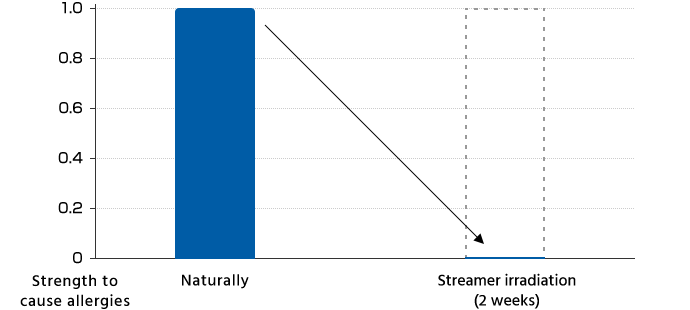
As a result of the experiment, it was confirmed that 99.9% of rice pollen was suppressed in 2 weeks after the Streamer irradiation.
Testing organization
Demonstrated at L.S.L. Asaka Research Laboratory under the supervision of Project Professor Kusakabe, graduate school of the University of Tokyo
Test method
Using an actual air purifier, the loss of antigenicity of the pollen placed on the filter was confirmed by ELISA method.
Demonstration of the suppression effect against pampas grass pollen
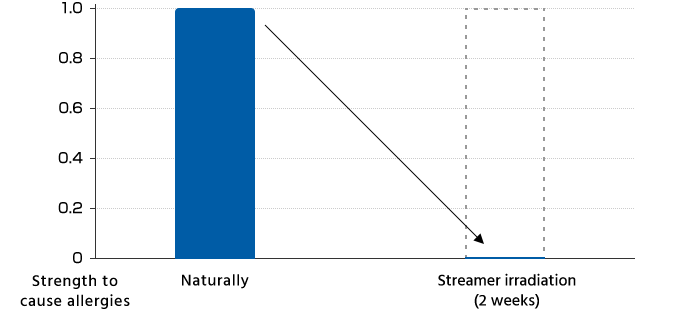
As a result of the experiment, it was confirmed that 99.9% of pampas grass pollen was suppressed in 2 weeks after the Streamer irradiation.
Testing organization
Demonstrated at L.S.L. Asaka Research Laboratory under the supervision of Project Professor Kusakabe, graduate school of the University of Tokyo
Test method
Using an actual air purifier, the loss of antigenicity of the pollen placed on the filter was confirmed by ELISA method.
Demonstration of the suppression effect against rye grass pollen
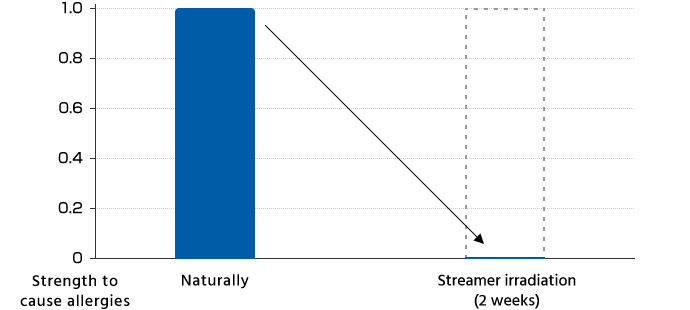
As a result of the experiment, it was confirmed that 99.9% of rye grass pollen was suppressed in 2 weeks after the Streamer irradiation.
Testing organization
Demonstrated at L.S.L. Asaka Research Laboratory under the supervision of Project Professor Kusakabe, graduate school of the University of Tokyo
Test method
Using an actual air purifier, the loss of antigenicity of the pollen placed on the filter was confirmed by ELISA method.
Demonstration of the suppression effect against timothy grass pollen
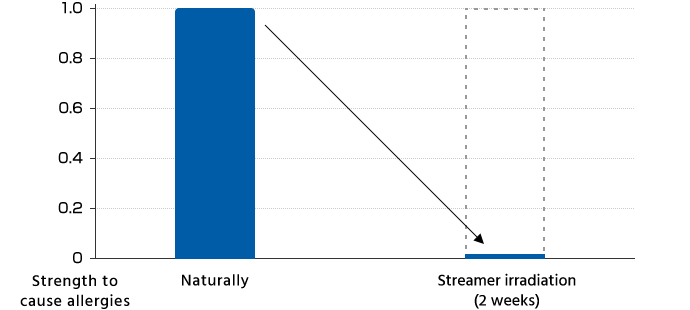
As a result of the experiment, it was confirmed that 97.9% of timothy grass pollen was suppressed in 2 weeks after the Streamer irradiation.
Testing organization
Demonstrated at L.S.L. Asaka Research Laboratory under the supervision of Project Professor Kusakabe, graduate school of the University of Tokyo
Test method
Using an actual air purifier, the loss of antigenicity of the pollen placed on the filter was confirmed by ELISA method.
Demonstration of the suppression effect against anthoxanthum odoratum pollen

As a result of the experiment, it was confirmed that 99.9% of anthoxanthum odoratum pollen was suppressed in 2 weeks after the Streamer irradiation.
Testing organization
Demonstrated at L.S.L. Asaka Research Laboratory under the supervision of Project Professor Kusakabe, graduate school of the University of Tokyo
Test method
Using an actual air purifier, the loss of antigenicity of the pollen placed on the filter was confirmed by ELISA method.
Demonstration of the suppression effect against orchardgrass pollen
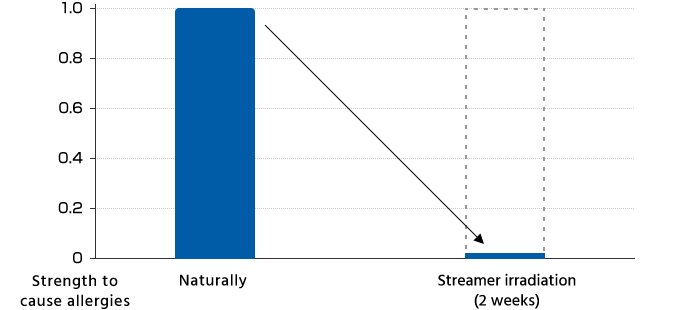
As a result of the experiment, it was confirmed that 97.7% of orchardgrass pollen was suppressed in 2 weeks after the Streamer irradiation.
Testing organization
Demonstrated at L.S.L. Asaka Research Laboratory under the supervision of Project Professor Kusakabe, graduate school of the University of Tokyo
Test method
Using an actual air purifier, the loss of antigenicity of the pollen placed on the filter was confirmed by ELISA method.
Demonstration of the suppression effect against red pine pollen
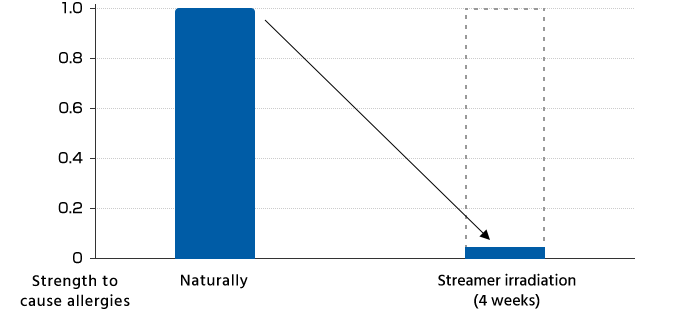
As a result of the experiment, it was confirmed that 95.4% of red pine pollen was suppressed in 4 weeks after the Streamer irradiation.
Testing organization
Demonstrated at L.S.L. Asaka Research Laboratory under the supervision of Project Professor Kusakabe, graduate school of the University of Tokyo
Test method
Using an actual air purifier, the loss of antigenicity of the pollen placed on the filter was confirmed by ELISA method.
Demonstration of the suppression effect against black pine pollen
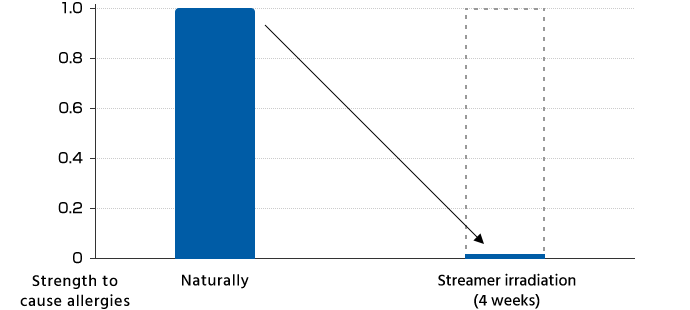
As a result of the experiment, it was confirmed that 98.0% of black pine pollen was suppressed in 4 weeks after the Streamer irradiation.
Testing organization
Demonstrated at L.S.L. Asaka Research Laboratory under the supervision of Project Professor Kusakabe, graduate school of the University of Tokyo
Test method
Using an actual air purifier, the loss of antigenicity of the pollen placed on the filter was confirmed by ELISA method.
Demonstration of the suppression effect against mugwort pollen
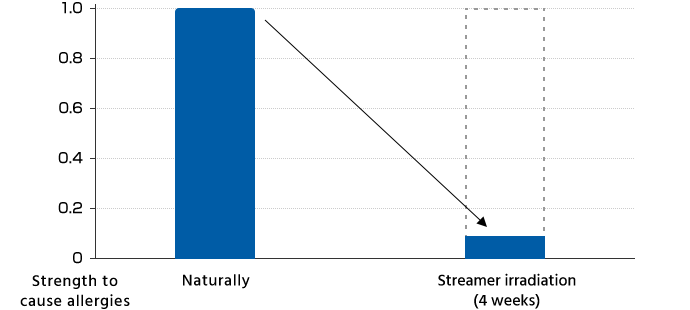
As a result of the experiment, it was confirmed that 90.6% of mugwort pollen was suppressed in 4 weeks after the Streamer irradiation.
Testing organization
Demonstrated at L.S.L. Asaka Research Laboratory under the supervision of Project Professor Kusakabe, graduate school of the University of Tokyo
Test method
Using an actual air purifier, the loss of antigenicity of the pollen placed on the filter was confirmed by ELISA method.
Demonstration of the suppression effect against goldenrod pollen
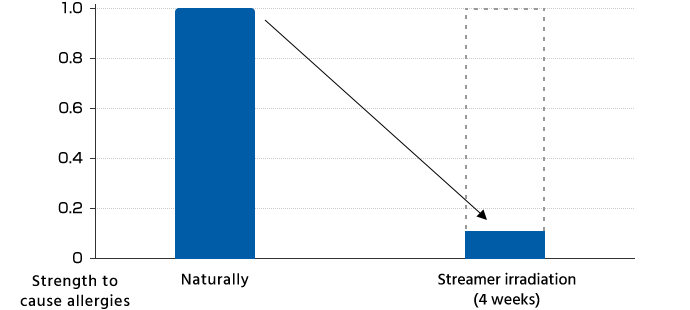
As a result of the experiment, it was confirmed that 88.8% of goldenrod pollen was suppressed in 4 weeks after the Streamer irradiation.
Testing organization
Demonstrated at L.S.L. Asaka Research Laboratory under the supervision of Project Professor Kusakabe, graduate school of the University of Tokyo
Test method
Using an actual air purifier, the loss of antigenicity of the pollen placed on the filter was confirmed by ELISA method.
Demonstration of the suppression effect against ragweed pollen
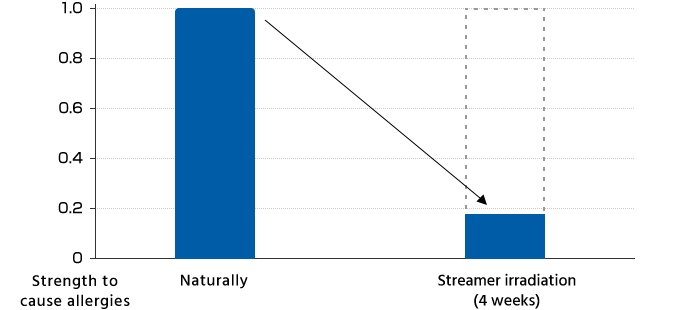
As a result of the experiment, it was confirmed that 81.8% of ragweed pollen was suppressed in 4 weeks after the Streamer irradiation.
Testing organization
Demonstrated at L.S.L. Asaka Research Laboratory under the supervision of Project Professor Kusakabe, graduate school of the University of Tokyo
Test method
Using an actual air purifier, the loss of antigenicity of the pollen placed on the filter was confirmed by ELISA method.
Demonstration of the suppression effect against Japanese hop pollen
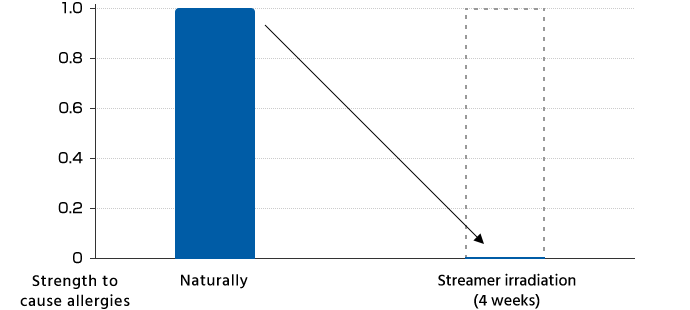
As a result of the experiment, it was confirmed that 99.9% of Japanese hop pollen was suppressed in 4 weeks after the Streamer irradiation.
Testing organization
Demonstrated at L.S.L. Asaka Research Laboratory under the supervision of Project Professor Kusakabe, graduate school of the University of Tokyo
Test method
Using an actual air purifier, the loss of antigenicity of the pollen placed on the filter was confirmed by ELISA method.
Demonstration of the suppression effect against white birch pollen
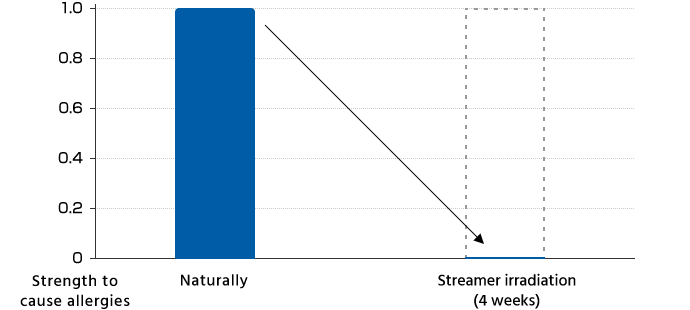
As a result of the experiment, it was confirmed that 98.2% of white birch pollen was suppressed in 4 weeks after the Streamer irradiation.
Testing organization
Demonstrated at L.S.L. Asaka Research Laboratory under the supervision of Project Professor Kusakabe, graduate school of the University of Tokyo
Test method
Using an actual air purifier, the loss of antigenicity of the pollen placed on the filter was confirmed by ELISA method.
Demonstration of the suppression effect against ginkgo pollen
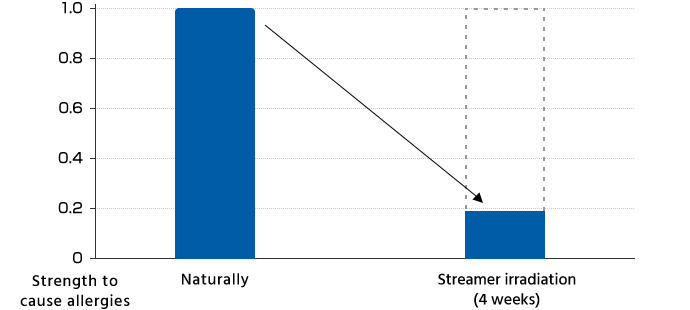
As a result of the experiment, it was confirmed that 80.6% of ginkgo pollen was suppressed in 4 weeks after the Streamer irradiation.
Testing organization
Demonstrated at L.S.L. Asaka Research Laboratory under the supervision of Project Professor Kusakabe, graduate school of the University of Tokyo
Test method
Using an actual air purifier, the loss of antigenicity of the pollen placed on the filter was confirmed by ELISA method.
Source: https://www.daikin-streamer.com/en/kafun16/

